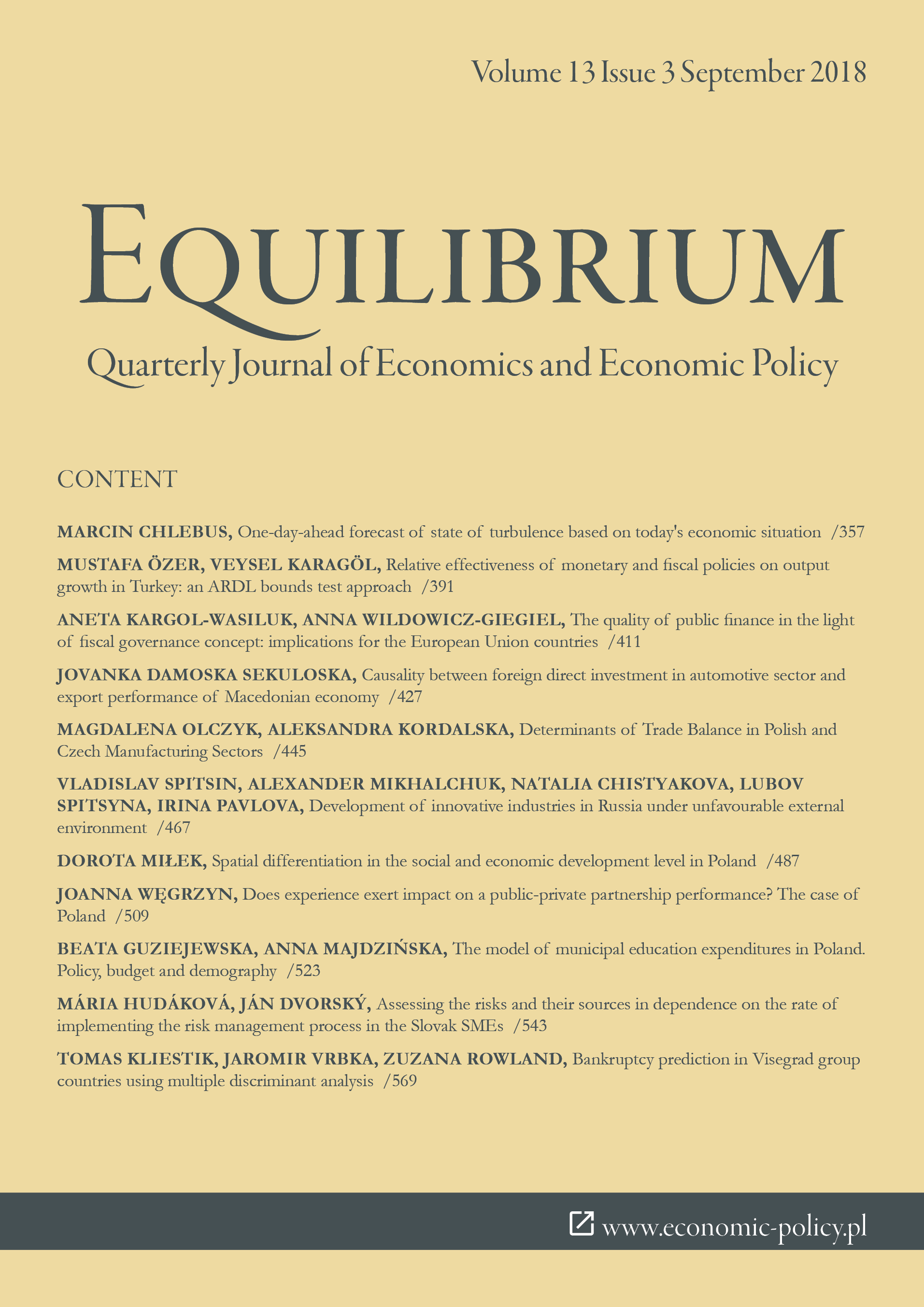One-day-ahead forecast of state of turbulence based on today's economic situation
One-day-ahead forecast of state of turbulence based on today's economic situation
Author(s): Marcin ChlebusSubject(s): Economy, Economic policy, Policy, planning, forecast and speculation, Transformation Period (1990 - 2010), Present Times (2010 - today), Financial Markets
Published by: Instytut Badań Gospodarczych
Keywords: forecasting; state of turbulence; regime switching; risk management; risk measure; market risk;
Summary/Abstract: In the literature little discussion was made about predicting state of time series in daily manner. The ability to recognize the state of a time series gives, for example, an opportunity to measure the level of risk in a state of tranquility and a state of turbulence independently, which can provide more accurate measurements of the market risk in a financial institution. Purpose of the article: The aim of article is to find an appropriate tools to predict, based on today's economic situation, the state, in which time series of financial data will be tomorrow. Methods: This paper proposes an approach to predict states (states of tranquility and turbulence) for a current portfolio in a one-day horizon. The prediction is made using 3 different models for a binary variable (Logit, Probit, Cloglog), 4 definitions of a dependent variable (1%, 5%, 10%, 20% of worst realization of returns), 3 sets of independent variables (untransformed data, PCA analysis and factor analysis). Additionally, an optimal cut-off point analysis is performed. The evaluation of the models was based on the LR test, HosmerLemeshow test, Gini coefficient analysis and CROC criterion based on the ROC curve. The analyses were performed for 43 individual shares and 5 portfolios of shares quoted on the Warsaw Stock Exchange. The study has been conducted for the period from 1 January 2006 to 31 January 2012. Findings & Value added: Six combinations of assumptions have been chosen as appropriate (any model for a binary variable, the dependent variable defined as 5% or 10% of worst realization of returns, untransformed data, 5% or 10% cut-off point respectively). Models built on these assumptions meet all the formal requirements and have a high predictive and discriminant ability to one-day-ahead forecast of state of turbulence based on today's economic situation.
Journal: Equilibrium. Quarterly Journal of Economics and Economic Policy
- Issue Year: 13/2018
- Issue No: 3
- Page Range: 357-389
- Page Count: 33
- Language: English

